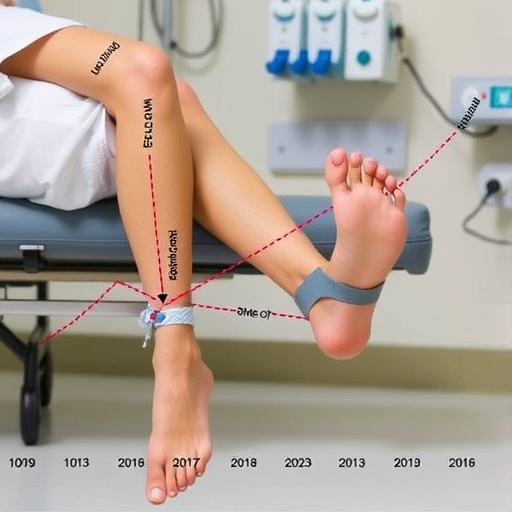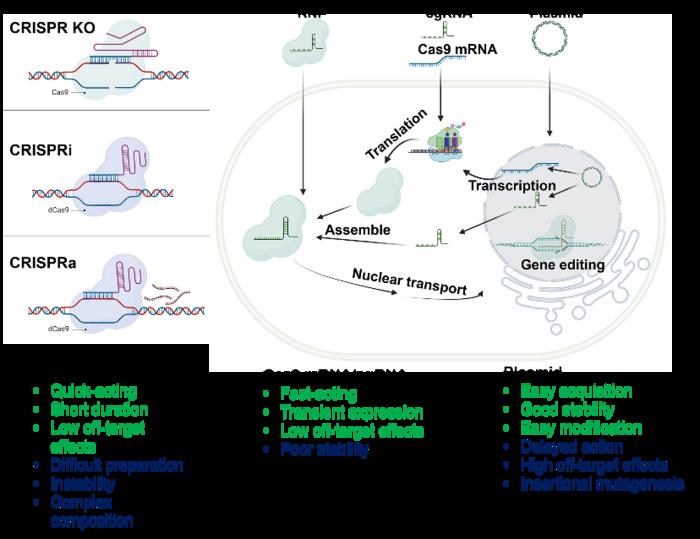Recent advancements in the field of biotechnology have heralded a new era in the management and treatment of diabetes, a condition that affects millions globally. Researchers are increasingly turning their attention to innovative materials that can enhance the effectiveness of diagnostics and therapeutics. Among these materials, carbon-based nanoplatforms have emerged as a remarkable solution. In a groundbreaking study published in the journal Annals of Biomedical Engineering, Jia, Wang, and Wang et al. meticulously explore this promising approach.
The study elucidates how carbon-based nanoplatforms, known for their unique physicochemical properties, can be employed to improve both the detection and treatment of diabetes. These nanoplatforms boast excellent biocompatibility, electronic conductivity, and the ability to carry drugs, all crucial features for medical applications. The capabilities of these structures offer a novel strategy for combating the challenges faced in diabetic patients, particularly in terms of real-time monitoring and therapeutics.
One of the most significant aspects of the research is its focus on the multifunctionality of carbon-based nanomaterials. Designed to serve dual purposes, these nanoplatforms can facilitate targeted drug delivery while also providing diagnostic functions. This convergence of capabilities can potentially simplify treatment regimens for patients managing diabetes. By reducing the number of required therapeutic agents to a single adaptable platform, patient adherence to treatment schedules could significantly improve.
Additionally, the study highlights the progress in the synthesis techniques for developing these carbon-based nanoplatforms. Recent breakthroughs in nanofabrication methods have allowed researchers to precisely engineer materials at the atomic and molecular level. This precision enables the tailoring of properties to match specific therapeutic needs, whether it’s the modification of surface chemistry to improve targeting or adjusting size for better cellular uptake. Such advancements reflect a growing trend in personalized medicine, where treatment can be customized to the patient’s unique metabolic profile.
Moreover, the article delves into the challenges encountered in the integration of these nanoplatforms within clinical settings. While the potential benefits are profound, issues such as scalability, regulatory hurdles, and biocompatibility assessments must be thoroughly addressed. Emerging regulatory frameworks must adapt to the rapid pace of innovation to facilitate the transition of these technologies from bench to bedside. Without effective collaboration between researchers, clinicians, and regulatory bodies, promising technologies may remain unutilized.
In-line with these discussions, the authors also emphasize the importance of safety assessments. The interaction of carbon-based nanomaterials with biological systems requires extensive investigation to ensure that they do not elicit adverse immunological responses. Ongoing studies are investigating the long-term effects of these materials in living systems, a vital step for substantiating their safety for regular use in diabetic patients.
As the study progresses, researchers are also focusing on the potential for these carbon-based nanoplatforms to aid in real-time glucose monitoring. Current glucose meters provide periodic readings, but innovations in biosensor technology could enable continuous monitoring, providing crucial data that could inform timely therapeutic decisions. Coupled with artificial intelligence algorithms, these systems could lead to smart insulin delivery mechanisms, enhancing the quality of care and outcomes for individuals with diabetes.
A significant aspect of the discussion around carbon-based nanoplatforms in diabetes management is their role in enhanced drug delivery. One of the common challenges in diabetes therapy is the need for precise dosing of insulin and other medications. Carbon-based materials can be engineered to release drugs in a controlled manner, responding to specific physiological cues. This targeting mechanism can minimize side effects and improve the effectiveness of treatment, offering a significant leap forward in diabetic care.
In addition to these advancements, the versatility of carbon-based nanoplatforms allows for their use in combination therapies. The heterogeneity of diabetes—a condition that manifests differently in various individuals—can complicate treatment strategies. Therefore, a multi-targeting approach, enabled by these nanoplatforms, can provide a more comprehensive solution. By co-delivering multiple agents that address various aspects of the disease, researchers can more effectively manage blood glucose levels and mitigate complications.
Although the benefits of carbon-based nanoplatforms are promising, it is crucial to consider the broader implications of their use. Ethical discussions surrounding nano-medicine, particularly in regards to equitable access and potential health disparities, need to be integrated into the development process. All stakeholders must ensure that advancements in diabetes care benefit all populations, particularly underrepresented communities that may be disproportionately affected by the disease.
As this innovative research continues to unfold, the potential applications of carbon-based nanoplatforms in diabetes are vast and varied. Future studies will likely explore combining these materials with other emerging technologies, such as wearable devices and mobile health applications. The integration of data from these multiple sources holds the potential to create a more holistic view of patient health, enabling tailored interventions that are timely and effective.
Ultimately, the exploration of carbon-based nanoplatforms signifies a transformative moment in diabetes research. Through meticulous research, studies like those conducted by Jia, Wang, and Wang et al. pave the way for more effective diagnostic tools and treatment options that can significantly enhance the lives of individuals living with diabetes. As research in this field progresses, the potential for these novel materials to redefine diabetes management becomes increasingly tangible, marking a new chapter in the intersection of nanotechnology and healthcare.
As we stand on the brink of these advancements, it is paramount for the scientific community to continue driving innovation while prioritizing patient outcomes. The journey from laboratory discoveries to widespread clinical application will be a collaborative effort requiring multidisciplinary expertise. With ongoing research and commitment, carbon-based nanoplatforms could indeed revolutionize diabetes management and provide hope for millions affected by this chronic condition.
Subject of Research: Carbon-Based Nanoplatforms in Diabetes Management
Article Title: Carbon-Based Nanoplatforms in Diabetes: A New Paradigm in Diagnosis and Treatment
Article References:
Jia, Y., Wang, Y., Wang, H. et al. Carbon-Based Nanoplatforms in Diabetes: A New Paradigm in Diagnosis and Treatment.
Ann Biomed Eng (2025). https://doi.org/10.1007/s10439-025-03896-8
Image Credits: AI Generated
DOI: 10.1007/s10439-025-03896-8
Keywords: Carbon-Based Nanoplatforms, Diabetes Management, Drug Delivery, Glucose Monitoring, Personalized Medicine.
Tags: advancements in biotechnology for diabetesbiocompatibility of carbon-based nanomaterialscarbon nanoplatforms for diabetes careelectronic conductivity in medical applicationsgroundbreaking studies in biomedical engineeringimproving diabetes diagnostics with nanotechnologyinnovative materials in diabetes treatmentmultifunctional nanomaterials for drug deliveryreal-time diabetes monitoring technologiesrevolutionizing diabetes treatment strategiestargeted drug delivery systems for diabetestherapeutic innovations in diabetes management






